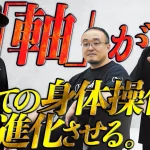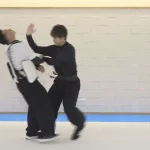Kobayashi Kiyohiro: A Lifetime Search for Aiki
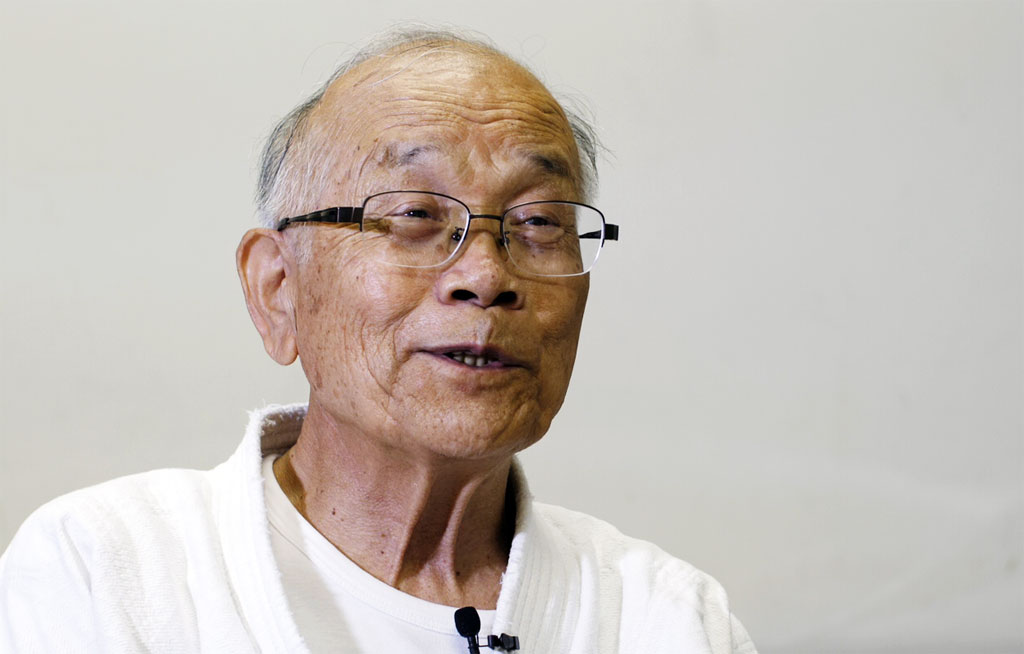
I mentioned Kobayashi Kiyohiro Sensei on several occasions in my previous articles, especially the influence that he had on getting me started in practicing Daito-ryu aiki-jujutusu. In this article, I would like to give more information about him and about his martial background, since he is not only one of the most experienced Daito-ryu aiki-jujutsu in activity today, but he is also a living link between the teachings of Daito-ryu aiki-jujutsu and that of aikido.

Kobayashi Kiyohiro receiving the winner’s certificate of the Osaka Tournament as the captain of the relay team.
Kobayashi Kiyohiro Sensei was born in Osaka on May 20, 1942. Even though he was of small stature, he quickly developed a keen interest in sports during childhood, and he most notably practiced athleticism at high level.
Around the age of twelve, he met a very influential person in the martial arts world, Nakamura Tenpu Sensei. Nakamura Sensei was a dedicated practitioner of budo, mostly known as the father of Japanese yoga. Nakamura Sensei had a great influence on a number of major martial arts instructors, especially among the disciples of Ueshiba Morihei Sensei, such as Tohei Koichi Sensei and Tada Hiroshi Sensei. He was also connected to Hisa Takuma Sensei, who had received the menkyo kaiden in Daito-ryu aiki-jujutsu from Takeda Sokaku, and an 8th dan in aikido from Ueshiba Morihei.
At that time, Nakamura Sensei used to teach fourteen-day summer courses in Osaka, which Kobayashi Sensei attended for a number of years. At the end of one of those courses, around 1960, Hisa was invited by Nakamura to give a demonstration. Instead of using his own students, Hisa used the different people who were present. Kobayashi Sensei told me that was very impressed by the fact that Hisa was able to teach young inexperienced girls how to apply techniques successfully on larger men, some of the experienced judoka. Even though he did not participate, Kobayashi Sensei concluded that if those girls could make those techniques work, then so could he.
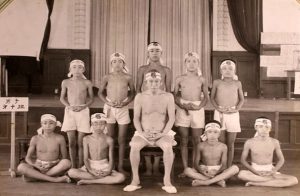
Kobayashi Kiyohiro (back row, second from the right) with Nakamura Tenpu during a Tempukai summer retreat.
As a result, Kobayashi Sensei went to Hisa’s Kansai Aikido Club, which was located on the third floor of the Saitama Building in Midosuji Awajimachi, and registered as his student in October 1961. Upon entering the dojo for the first time, he was surprised by the narrowness of the practice surface, which was only of about eight tatami mats. The dojo would soon be moved to a nearby location though, and the space was increased up to twenty tatami mats. In spite of the name of the dojo, what Hisa taught was what we know today as Daito-ryu aiki-jujutsu. In fact, according to the archives of the Daito-kan, Hisa was in fact the Technical Director of the Daito-ryu aiki-budo Headquarters, which was under the direction of Takeda Tokimune Soke, the son of Takeda Sokaku.
At the time Kobayashi Sensei joined, Hisa Sensei had recently suffered a stroke, which had left him with hemiplegia. Though Hisa came back to teach quite rapidly, his diminished physical condition greatly affected the way he taught. Luckily, Kobayashi Sensei got to take a lot of ukemi for Hisa Sensei, and it allowed him to understand some of the finer points of his technique.
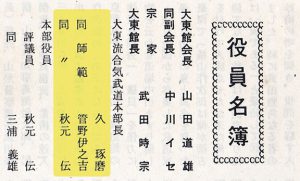
List of officers of the Daito-kan (as of August 1st, 1973). Takeda Tokimune is listed as Soke and Hisa Takuma as Director of the Daito-ryu aiki-budo Headquarters. Reproduced with permission from Marc Trudel’s blog
I believe that this is what makes Kobayashi Sensei’s technique special, in the sense that his technique is incredibly subtle and detailed, showing that he has felt in his own body the mechanics that are to be applied. This is a sensation that I have had with only a handful of teachers. One defining characteristic of Kobayashi Sensei is that he usually does not let visitors watch his classes. He welcomes anyone, even when they are unannounced, but he insists that to understand what Daito-ryu is, they must experience his technique with their bodies rather than just watch.
Kobayashi Sensei quickly came to the realization that the number of practice sessions offered at the Kansai Aikido Club was not sufficient, so he decided to also join the Osaka Asahi Journal Dojo, which was under the direction of Moriwaki Kiyoshi Sensei. Just like during the glorious times of the practice under Takeda Sokaku and Ueshiba Morihei, most of the employees who came to practice were members of the printing bureau and security staff, and many of them were quite large men, which Kobayashi Sensei saw as a welcome challenge.
A strong aikido connection
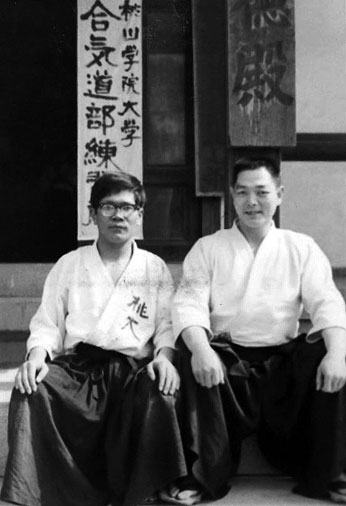
Kobayashi Kiyohiro (left) and Kobayashi Hirokazu (right) in front of the Momoyama Gakuin University Aikido Club
It is undeniable that the teachings of Hisa Sensei were also heavily influenced by the aikido technique of his first teacher, Ueshiba Morihei Sensei, who taught him at the Asahi Newspaper from 1934 to 1936. It can be said that Kobayashi Sensei and his fellow students benefited from the fact that Hisa was truly a living bridge between the techniques of Ueshiba Morihei Sensei and Takeda Sokaku Sensei. However, this link with aikido would also keep deepening through Kobayashi Sensei’s own martial practice.
In 1962, still wanting to increase his practice time, Kobayashi Sensei founded a Daito-ryu aiki-jujutsu club at Momoyama Gakuin University, where he was studying. Unfortunately, Hisa Sensei’s physical condition did not allow him to oversee the activities of the club, and he did not have anyone to take charge in his name, so he asked Kobayashi Hirokazu Sensei, a student of Ueshiba Morihei Sensei, to take care of the club and of Kobayashi Kiyohiro Sensei.
As a result, the club became an aikido club affiliated to the Kansai Student Aikido Federation, which was under the Aikikai Foundation. For a while, Kobayashi Sensei therefore studied Daito-ryu from Hisa, and aikido from Kobayashi Hirokazu.
In 1965, Kobayashi Kiyohiro Sensei received a letter of introduction from Hisa Sensei, which allowed him to train under Ueshiba Morihei Sensei for about a month at the old Aikikai Hombu Dojo in Tokyo. Kobayashi Sensei also made use of the spare time to train at Shioda Gozo Sensei’s Yoshinkan in Iidabashi.
I don’t know whether it was because Hisa Sensei thought that I should toughen up, but he wrote me letters of introduction towards Takeda Tokimune Sensei, the Soke of Daito-ryu, Ueshiba Morihei Sensei of the Aikikai, and Shioda Gozo Sensei of the Yoshinkan. Thanks to that, I was able to practice in all of these dojo. At that time, I was young so I practiced mainly for the physicals aspects, but this experience has become a lifelong treasure for my aikido life.
I believe that this very special training history is what made Kobayashi Sensei’s classes so interesting to me. Since he knew that I was already trained in aikido, Kobayashi Sensei adapted his teaching terminology and his method in a way that made parallels with aikido, in order to teach me the specificity of Daito-ryu aiki-jujutsu. It made everything very clear for me. Moreover, unlike many other Daito-ryu teachers, Kobayashi Sensei never criticized aikido, nor have ever I seen him display even the slightest bit of condescendence towards any aikidoka.

Kobayashi Kiyohiro Sensei singing a traditional song during my wedding (2013).
Please let me take the time to tell you a personal story that is related to this. Ahead of our wedding, my soon-to-be wife and I had invited groups of aikido and Daito-ryu practitioners, including Miyamoto Tsuruzo Sensei from the Aikikai Hombu Dojo and Kobayashi Sensei. We took great care placing those two groups at different locations in the room since we weren’t sure whether they would interact well together. It may be hard to understand nowadays but the reader has to remember that over ten years ago, Daito-ryu was nowhere near as open about its activities and relationships with aikido than it is today, mostly thanks to social media. I was a little worried when everybody entered the room but to my relief, I caught a glimpse of Kobayashi Sensei and Miyamoto Sensei cordially exchanging business cards. They also spent quite a great deal of time talking together during the second party. Later, Miyamoto Sensei told me that he really enjoyed meeting Kobayashi Sensei and that he was a very friendly and humble man.
A study under many teachers

Kobayashi Kiyohiro (center) and fellow students in front of the Daito-kan in Abashiri (1968)
To add to his already considerable experience, Kobayashi Kiyohiro Sensei was sent by Hisa Sensei with a group of fellow students to Hokkaido to take part in a training camp under the direction of Takeda Tokimune at the Daito-kan in Abashiri. On his way, he took the opportunity to visit Horikawa Kodo Sensei in Engaru and train with him for three days.
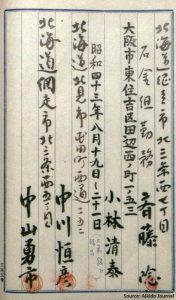
Excerpt from the Takeda eimeiroku showing the name of Kobayashi Kiyohiro. It states that the training took place at the Daito-kan in Hokkaido in 1968.
When I asked Kobayashi Sensei about the date of this trip, he could not quite remember, but later on during my study of the Takeda family’s eimeiroku, I was incredibly excited to find Kobayashi Kiyohiro Sensei’s name in an entry dated from August 1968 19th to 21st! In excitement, I ran to show it to him and his reaction was as simple and humble as the man himself, he said “The eimeiroku in Hokkaido? I didn’t know that they wrote my name down.”
This is another wonderful insight into his character, as in spite of being one of the most experienced aiki practitioners alive, he is also one of the least boastful teachers that I have ever met. His true love is for aiki, not for status, and I have seen him take classes from people who were much junior to him, yet giving them his full attention and trying to catch the details of what was shown.
I went to various dojo and I attended many lessons and got much guidance. It is interesting to make new discoveries and to find new references during those lessons. There seems to be no end to the learning that is to be fond along this way. Even though I became older and got in a position to teach, I am still passionate about studying Daito-ryu. I think that I will continue to practice as long as my physical strength continues, without losing sight of my original intention.
Whenever I catch myself being big-headed, I always think about Kobayashi Sensei’s total devotion to learning, which puts me right back in my place.
A life-long learner
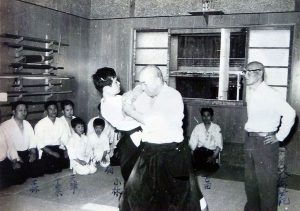
Makita Kan’ichi performing a technique on Kobayashi Kiyohiro under the direction of Hisa Takuma during a two-day seminar at Makita’s Komatsushima Branch Dojo (May 19th and 20th, 1973).
Of all the high-ranking teachers of the Takumakai, Kobayashi Sensei is the one that I have seen the most often attending the seminars of Chiba Tusgutaka Sensei. Kobayashi Sensei was there during the first gatherings between Hisa Takuma Sensei and Nakatsu Heizaburo Sensei’s students in Makita Kan’ichi’s dojo in Komatsushima, and he still goes there nowadays, even after Chiba Sensei’s passing.
In fact, Kobayashi Sensei is the one who took my sempai Olivier Gaurin to meet Chiba Sensei for the first time, and I have many fond memories of spending weekends travelling with him to Shikoku. Indeed, Kobayashi Sensei always makes a point to use the time off the mat to visit the region and enjoy the local delicacies.
Becoming a teacher
In 1968, as Hisa Takuma Sensei got older, he moved from Osaka to Tokyo to live with one of his daughters, and therefore, the Kansai Aikido Club closed down. This gave Kobayashi Sensei and several of his colleagues an incentive to start their own dojo. Kobayashi Sensei received the title of kyoju dairi (representative instructor) from Hisa Takuma Sensei in 1970. Hisa Sensei then promoted him to the 8th dan in Daito-ryu aiki-jujutsu in 1973.

I (back row, center) spent many weekends in Shikoku with Kobayashi Sensei (front row, second from the right) attending Chiba Tsugutaka Sensei’s (center) seminars (June 2013)
Later in 1974, the Asahi Culture Center was created at Senri Kaikan and Kobayashi Kiyohiro Sensei was asked to teach there by one of Hisa Sensei’s former students, Mr Yamada Saburo. From that point, he never stopped teaching, and several of his own students are now running their own branch dojo.
When the Takumakai was formed in 1975, Kobayashi Sensei was appointed secretary general. By the time Hisa Takuma Sensei passed away in 1980, it was clear that the organization was strong enough and would survive him. The Takumakai became a general incorporated foundation in September 2016. As a result of the work of Kobayashi Sensei and several others such as the director Mori Hakaru Sensei, and technical director Kawabe Takeshi Sensei, the Takumakai steadily grew as one of the largest Daito-ryu organizations, with up to five hundred adult members and two hundred children. It also has several branches abroad, and Kobayashi Sensei regularly goes to teach outside of Japan.
A researcher of Daito-ryu
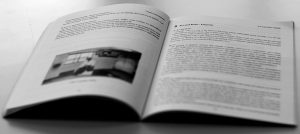
The Takumakai’s Keiko Techo was also translated in English for foreign practitioners.
In addition to being a meticulous technician, Kobayashi Sensei is also a very enthusiastic historian of aiki and a prolific writer. He has written a large number of articles and he is very involved in the Takumakai publications such as its newsletter and its beginners’ guide. As a history enthusiast myself, his work has been incredibly valuable and inspirational.
Kobayashi Sensei is aware of the fact that due to the extensive nature of Daito-ryu aiki-jujutsu’s curriculum, a great number of interpretations are possible. Therefore, he takes great effort in cataloguing and passing what he knows to the next generations. He released a book that was privately circulated among his students a few years ago.
I don’t want to let the techniques that I learned go to waste, so I thought I’d keep it in a record. I wondered if I could make it into one book. I would like to put it together in a volume and distribute it to everyone.
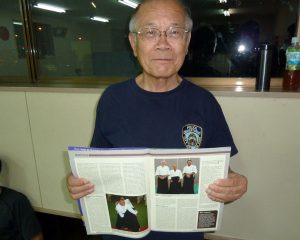
Kobayashi Sensei in Shikoku, holding a French magazine in which I had written about him and Chiba Sensei (September 2013)
What makes Kobayashi Sensei’s seminars very interesting is the depth of his knowledge in terms of different ways to do a single technique. Me and Hiden’s editor recently attended a seminar with Kobayashi Sensei in Tokyo. As Kobayashi Sensei started to demonstrate some standard techniques, the editor, who has a very fine eye for details, told me: “He did it twice but did not show it the same way”, to which I responded “and yet this is also different from the way he taught this technique to me years ago!” This shows that Kobayashi Sensei is a living encyclopedia of Daito-ryu knowledge! Kobayashi Sensei is able to demonstrate techniques according to the many ways he has studied with many different teachers, putting incredible attention to the small details, and the underlying purpose and principles.
Great Daito-ryu teachers may be able to do impressive things, but power should not matter, so the question should really be: Can girls do it? If small girls can’t do it as well, then it’s not a budo. In that sense I think that it’s not jujutsu. In any case, it is with that in mind that I’m doing it now.
One thing he shares with the great Daito-ryu teachers is that Kobayashi Sensei adapts his teaching and his instructions to every of his students. As I mentioned before, details matter a great deal to him and he has a very specific way to tell me when I am doing something wrong; he approaches, looks at me, shakes his head from side to side while smiling and, and then proceeds to showing me again how to do it properly. Unlike many other Daito-ryu teachers however, Kobayashi Sensei is also really open to variations and interpretations, and he encourages his students to experiment with their own technique.
I think it becomes interesting when one has the capacity to be inclusive. If you do things exactly like one single teacher does, I think that there is little potential for development. It is up to you to polish the techniques within the widest possible range that you have learned, because if you look at it carefully, things are a little different with every teacher.
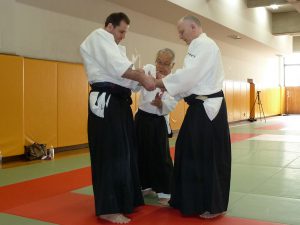
Kobayashi Kiyohiro teaching fine technical details to Guillaume Erard and Olivier Gaurin in Tokyo (April 2014)
Now in his late seventies, Kobayashi Sensei is still as active as ever. He teaches regularly in his dojo in Osaka and comes every month to Tokyo to teach the Takumakai Tokyo – Saitama group in which I started. In over the ten years I have spent in Japan, I can remember of only a handful of times when Kobayashi Sensei failed come to Tokyo for one of these seminars, and it was when he had to undergo surgery. Shortly after though, he was back teaching us. I am ashamed to admit that I have personally missed many more of those classes, for one reason or another. This really show Kobayashi Sensei’s total dedication to Daito-ryu and to his students. On top of all that, Kobayashi Sensei also attends many events and seminars all year round.
I have become one of the oldest. I would like to further improve my Daito-ryu aiki-jujitsu as a practitioner, not as a secretary-general. It has been more than forty years since I started practicing. I’m not good at it, but I’m enjoying it. I think it’s a lifelong practice. Most importantly, I’m having fun.
The regular reader of Hiden magazine will know that I have paid tribute several times to Kobayashi Sensei for his incredible influence on my martial arts practice. More than that, since I moved to Japan, he has been a source of inspiration and support and he has opened my eyes to the importance of being a good technician, but more importantly a good person both on and off the tatami.
About the author

Guillaume Erard
Guillaume Erard is an author and educator, permanent resident of Japan. He has been training for over ten years at the Aikikai Headquarters in Tokyo, where he received the 6th Dan from Aikido Doshu Moriteru Ueshiba. He studied with some of the world’s leading Aikido instructors, including several direct students of O Sensei, and has produced a number of well regarded video interviews with them. Guillaume now heads the Yokohama AikiDojo and he regularly travels back to Europe to give lectures and seminars. Guillaume also holds the title of 5th Dan in Daito-ryu aiki-jujutsu and serves as Deputy Secretary for International Affairs of the Shikoku Headquarters. He is passionate about science and education, and he holds a PhD in Molecular Biology. Guillaume’s work can be accessed through his website and on his YouTube channel.





